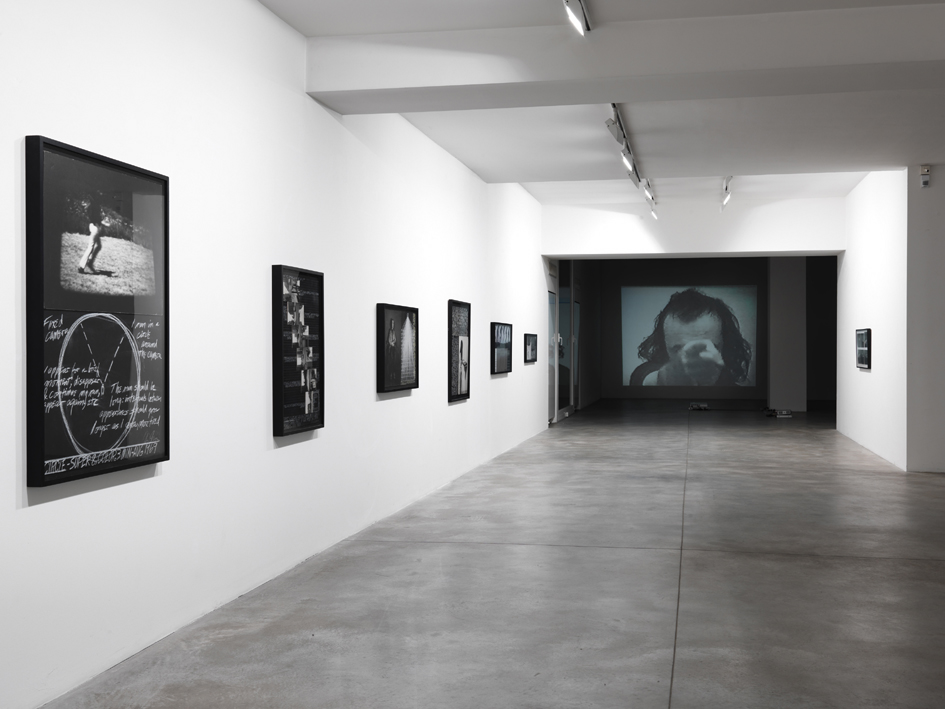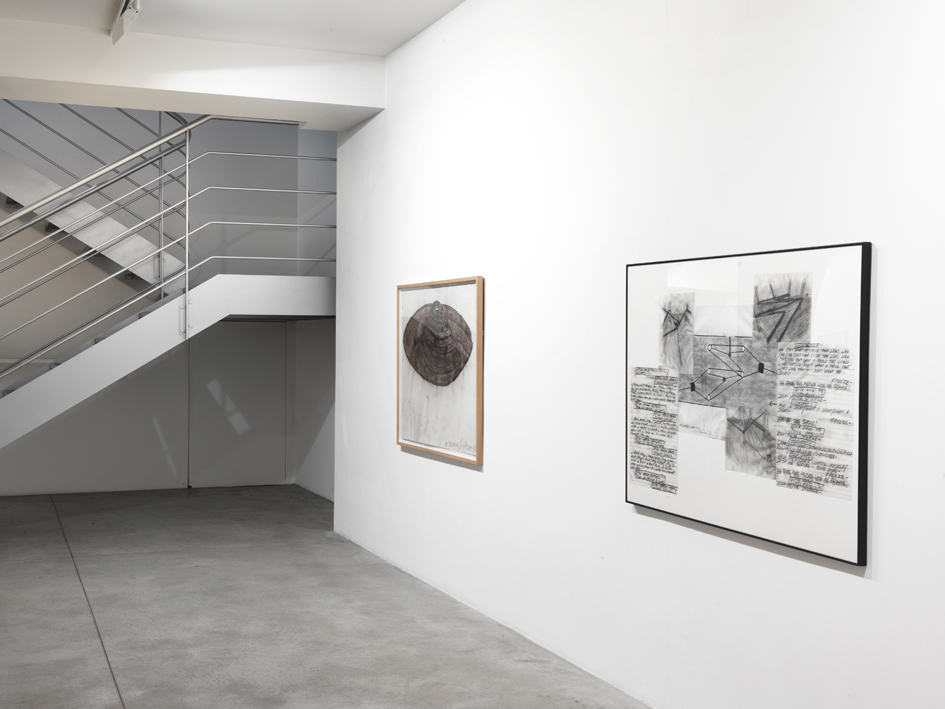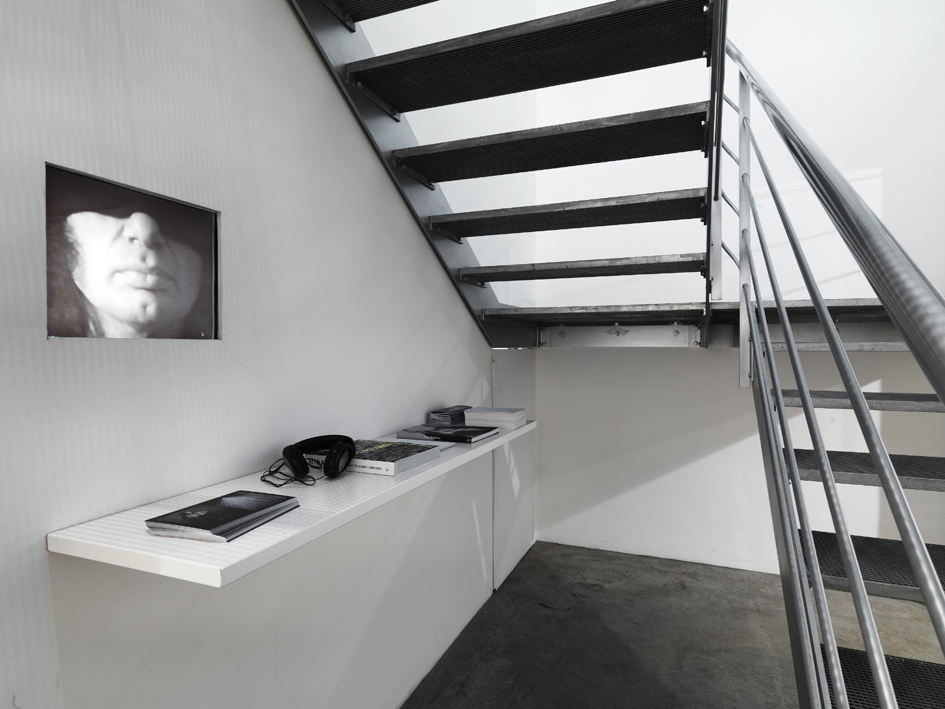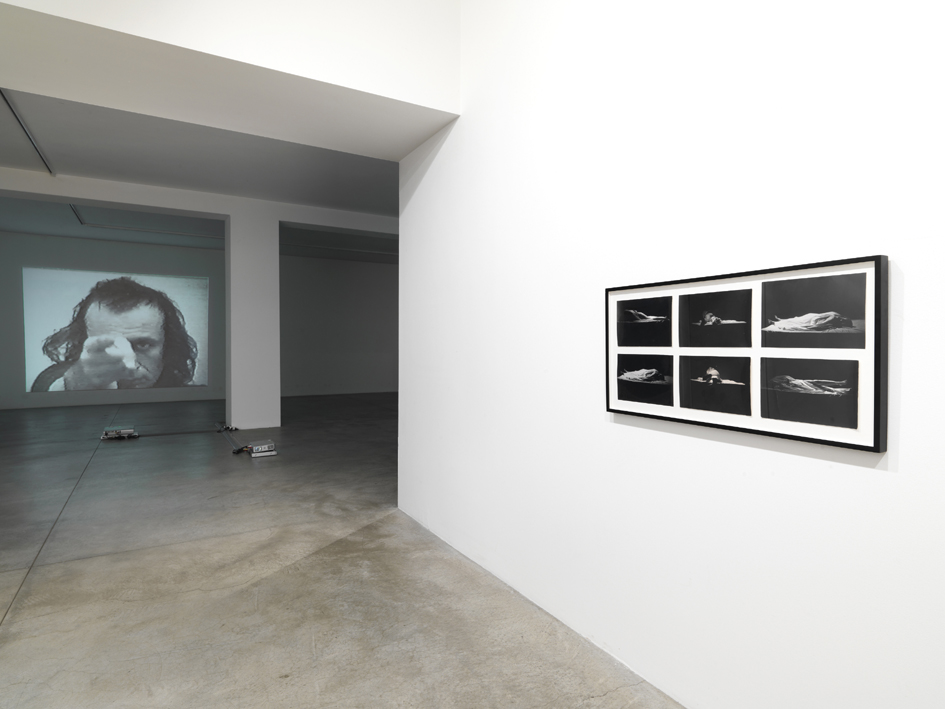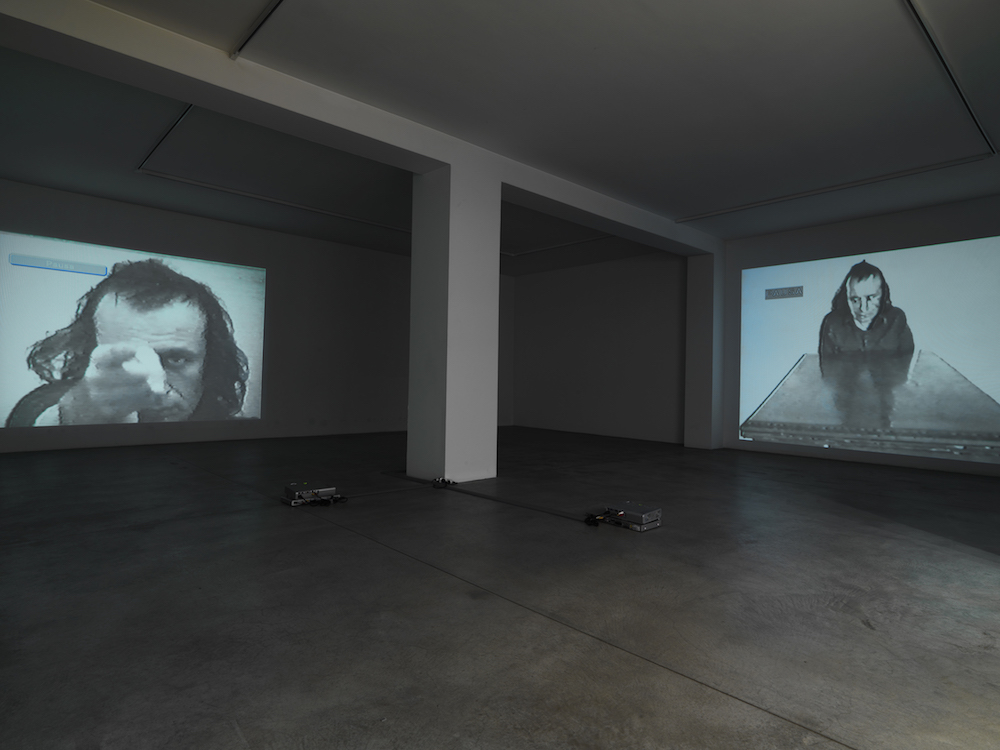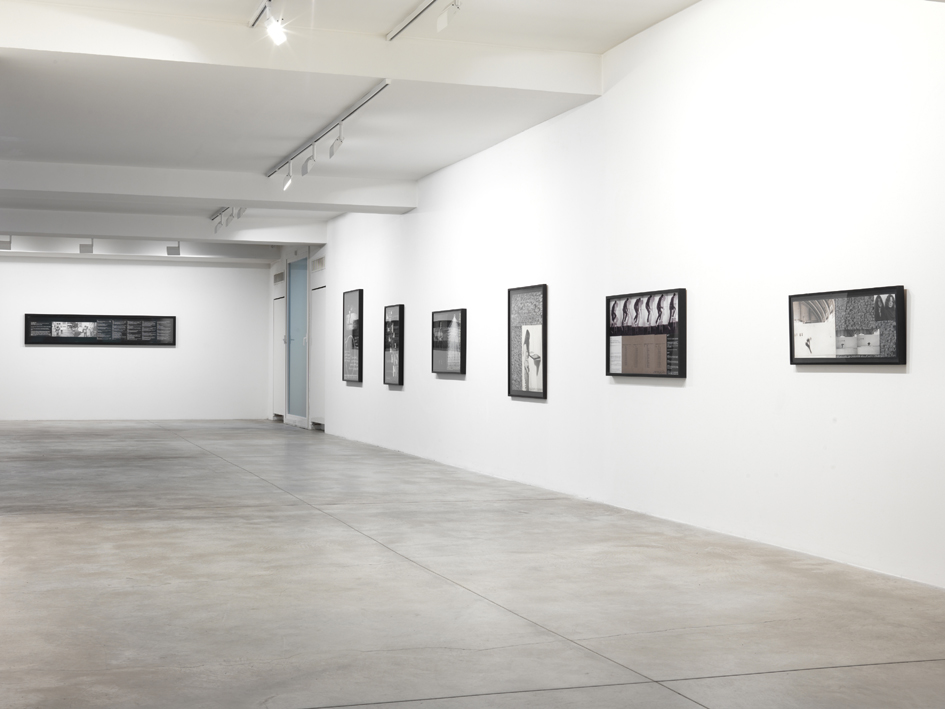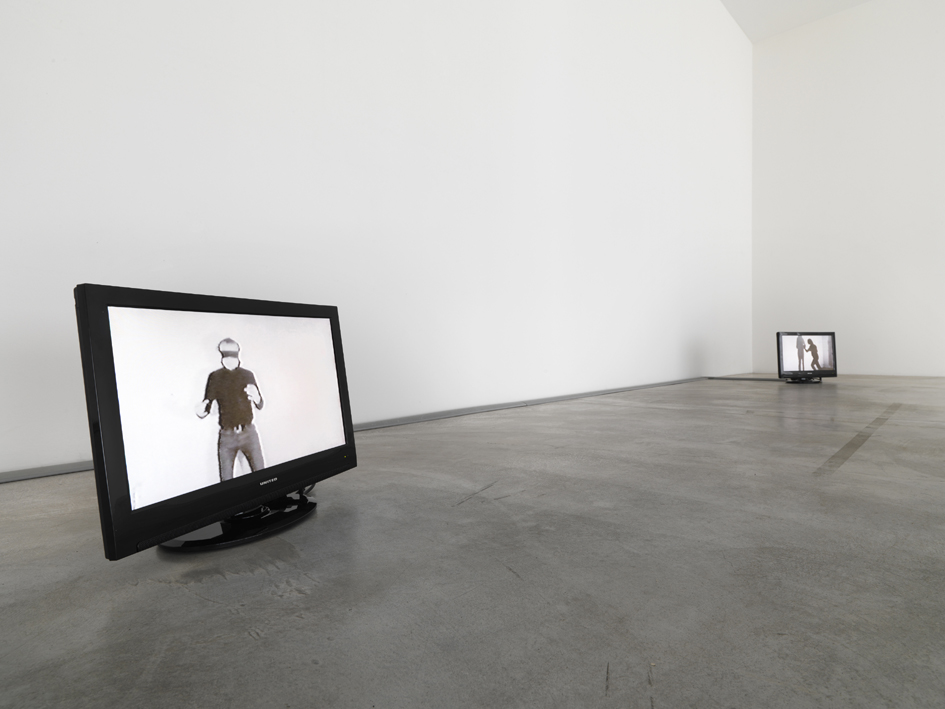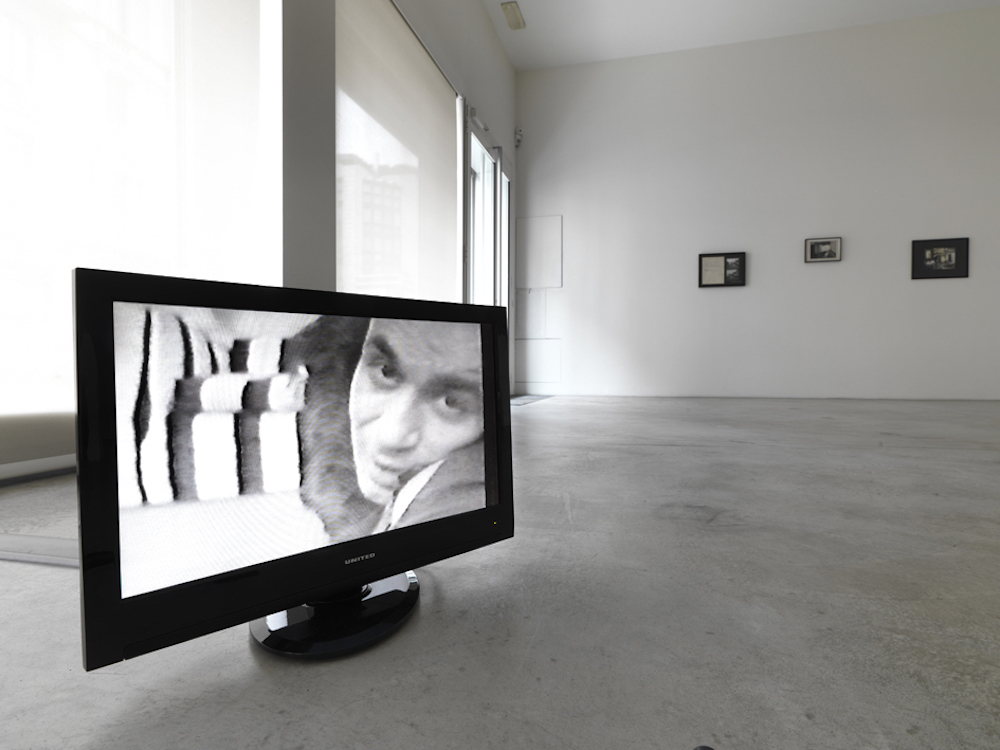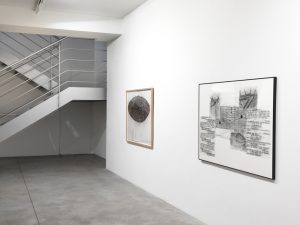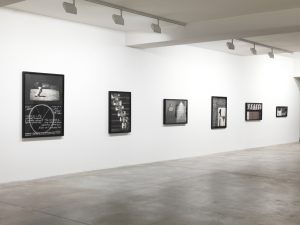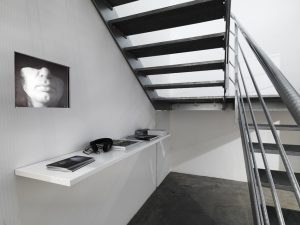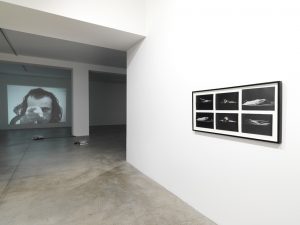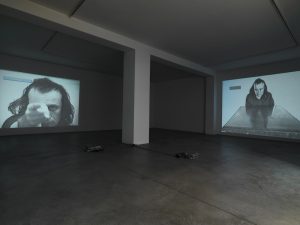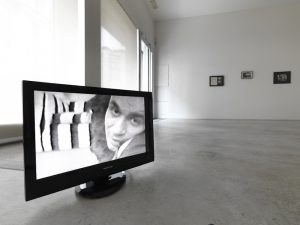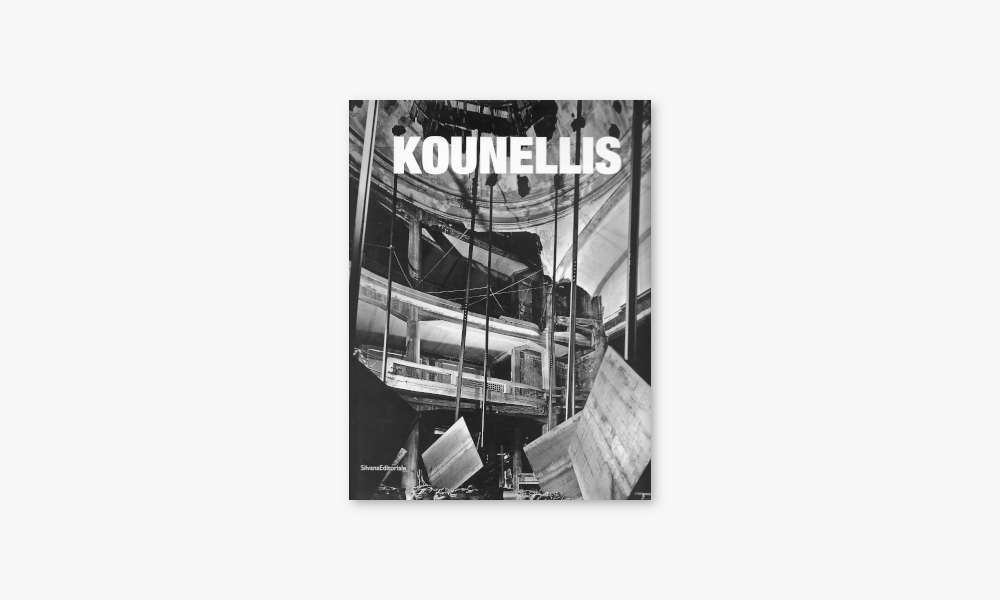
VITO ACCONCI
SPACE OF THE BODY - OPERE 1969/1986
15 February to 30 April 2011
VITO ACCONCI
SPACE OF THE BODY - OPERE 1969/1986
15 February to 30 April 2011
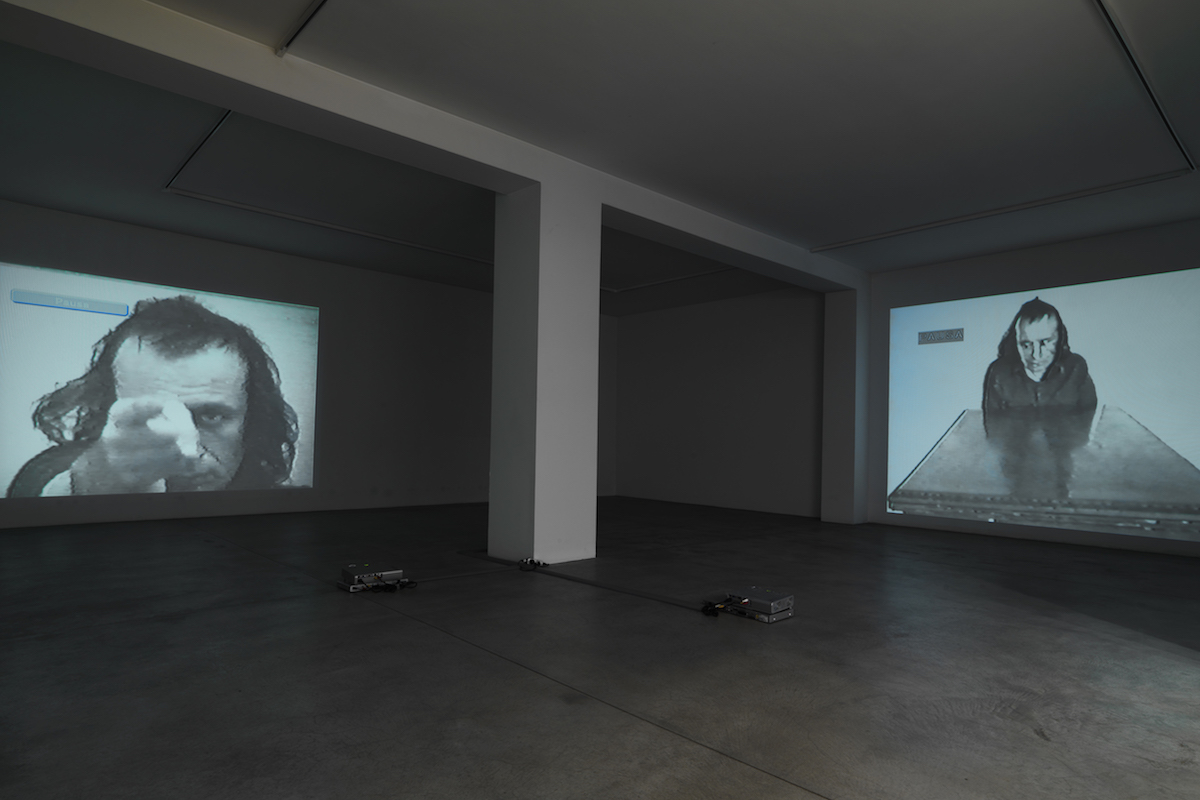
Text
Galleria Fumagalli continues its investigation into American art by exhibiting “Space of the body”, a solo exhibition by Vito Acconci, one of the leading figures on the international art scene who, since the 1960s, imposed his experiments on poetry, of video and Body Art coming to architecture and public art. A few months after the review organized by Castello di Rivoli, the gallery in Bergamo offers a selection of works created between 1969 and 1986 that show the artist’s research in its different facets. Photographs, videos, drawings and mixed techniques are on view, most of them never before exhibited in an Italian public exhibition. It is therefore a particularly significant occasion to reflect on the investigation of an artist who has profoundly changed the languages of art, focusing his research on the relationship with the public, a theme that will be the theme of the upcoming Venice Biennale “ILLUMInations” curated by Bice Curiger. At the end of the Sixties, when the art scene appeared dominated by Pop Art and Minimalism that focused on the object in a different way, Acconci radically changed the language by using his image as an expressive means and a performative reference point contributing to the affirmation of Body Art, as well as process and relational art. The American artist has made an exhaustive exploration of his own body using it as a tool on which to intervene in works of strong emotional impact and restlessness in order to create physical and psychological discomfort.
In his works the fotocamera and the videocamera have been used in an instrumental and unaesthetic way, losing their traditional meaning to become an instrument of tracking. The exhibition starts from Circle, a photographic work from 1969 where the artist films himself by moving around the camera inverting the traditional relationship with the medium. The following year he creates another emblematic work of the exhibition, Step, where Acconci physically documents his physical effort. The actions that are characterized by states of discomfort, by an unusual effort up to the physical pain, are generally shot from a fixed camera, without audio, or with the mere presence of the artist’s voice. After “entering into himself”, as he defined his first actions, he begins to “enter the others” by performing works and performances in which Acconci is at the same time artist and spectator. This procedure is also documented in the exhibition as shown by the work Approaches, also from 1970, where the observer becomes the instrument of observation. In Following Piece, another work presented on this occasion, the artist secretly follows strangers in the street eavesdropping on their speeches and invading their privacy space. Acconci’s testimonials are profoundly innovative and anticipate the media system, the entire information system (just to mention Wikileaks), as well as the problems that involve the internet and the video channels like YouTube.
Like Samuel Beckett, Acconci, with bitter humor, has often worn a dramatic mask to investigate man weakness. His journey has always involved every form of knowledge like the writing (he began his career as a poet) which represents an automatic and obsessive gesture intended as a completion of photographic images. In his works, in fact, each element is used in a deviant manner in order to put the presuppositions in crisis. With the same demystifying attitude, he approached urban space by making the gallery a place of action by creating a tautology between the container and the work: furniture and chairs were moved from one side to the other to express their total nonsense. In VD Lives / TV Must Die from 1978, the columns of the gallery became slings with large rubber bands and the cannon bullets aimed at the monitors and the window of the exhibition space. Finally, there is also an explicit reference to architecture with the War Memorial from 1986 that anticipates its extensive activity in the field of Public Art that led to the creation of Studio Acconci. At the end of the show, a series of experimental videos from the 1970s such as Waterways: 4 saliva studies and Centers from 1971, in addition to Undertone and Theme song from 1973. They are highly provocative works where the body becomes a means of interact with the other and with space.
Text
Galleria Fumagalli continues its investigation into American art by exhibiting “Space of the body”, a solo exhibition by Vito Acconci, one of the leading figures on the international art scene who, since the 1960s, imposed his experiments on poetry, of video and Body Art coming to architecture and public art. A few months after the review organized by Castello di Rivoli, the gallery in Bergamo offers a selection of works created between 1969 and 1986 that show the artist’s research in its different facets. Photographs, videos, drawings and mixed techniques are on view, most of them never before exhibited in an Italian public exhibition. It is therefore a particularly significant occasion to reflect on the investigation of an artist who has profoundly changed the languages of art, focusing his research on the relationship with the public, a theme that will be the theme of the upcoming Venice Biennale “ILLUMInations” curated by Bice Curiger. At the end of the Sixties, when the art scene appeared dominated by Pop Art and Minimalism that focused on the object in a different way, Acconci radically changed the language by using his image as an expressive means and a performative reference point contributing to the affirmation of Body Art, as well as process and relational art. The American artist has made an exhaustive exploration of his own body using it as a tool on which to intervene in works of strong emotional impact and restlessness in order to create physical and psychological discomfort.
In his works the fotocamera and the videocamera have been used in an instrumental and unaesthetic way, losing their traditional meaning to become an instrument of tracking. The exhibition starts from Circle, a photographic work from 1969 where the artist films himself by moving around the camera inverting the traditional relationship with the medium. The following year he creates another emblematic work of the exhibition, Step, where Acconci physically documents his physical effort. The actions that are characterized by states of discomfort, by an unusual effort up to the physical pain, are generally shot from a fixed camera, without audio, or with the mere presence of the artist’s voice. After “entering into himself”, as he defined his first actions, he begins to “enter the others” by performing works and performances in which Acconci is at the same time artist and spectator. This procedure is also documented in the exhibition as shown by the work Approaches, also from 1970, where the observer becomes the instrument of observation. In Following Piece, another work presented on this occasion, the artist secretly follows strangers in the street eavesdropping on their speeches and invading their privacy space. Acconci’s testimonials are profoundly innovative and anticipate the media system, the entire information system (just to mention Wikileaks), as well as the problems that involve the internet and the video channels like YouTube.
Like Samuel Beckett, Acconci, with bitter humor, has often worn a dramatic mask to investigate man weakness. His journey has always involved every form of knowledge like the writing (he began his career as a poet) which represents an automatic and obsessive gesture intended as a completion of photographic images. In his works, in fact, each element is used in a deviant manner in order to put the presuppositions in crisis. With the same demystifying attitude, he approached urban space by making the gallery a place of action by creating a tautology between the container and the work: furniture and chairs were moved from one side to the other to express their total nonsense. In VD Lives / TV Must Die from 1978, the columns of the gallery became slings with large rubber bands and the cannon bullets aimed at the monitors and the window of the exhibition space. Finally, there is also an explicit reference to architecture with the War Memorial from 1986 that anticipates its extensive activity in the field of Public Art that led to the creation of Studio Acconci. At the end of the show, a series of experimental videos from the 1970s such as Waterways: 4 saliva studies and Centers from 1971, in addition to Undertone and Theme song from 1973. They are highly provocative works where the body becomes a means of interact with the other and with space.
Installation views
Installation views

